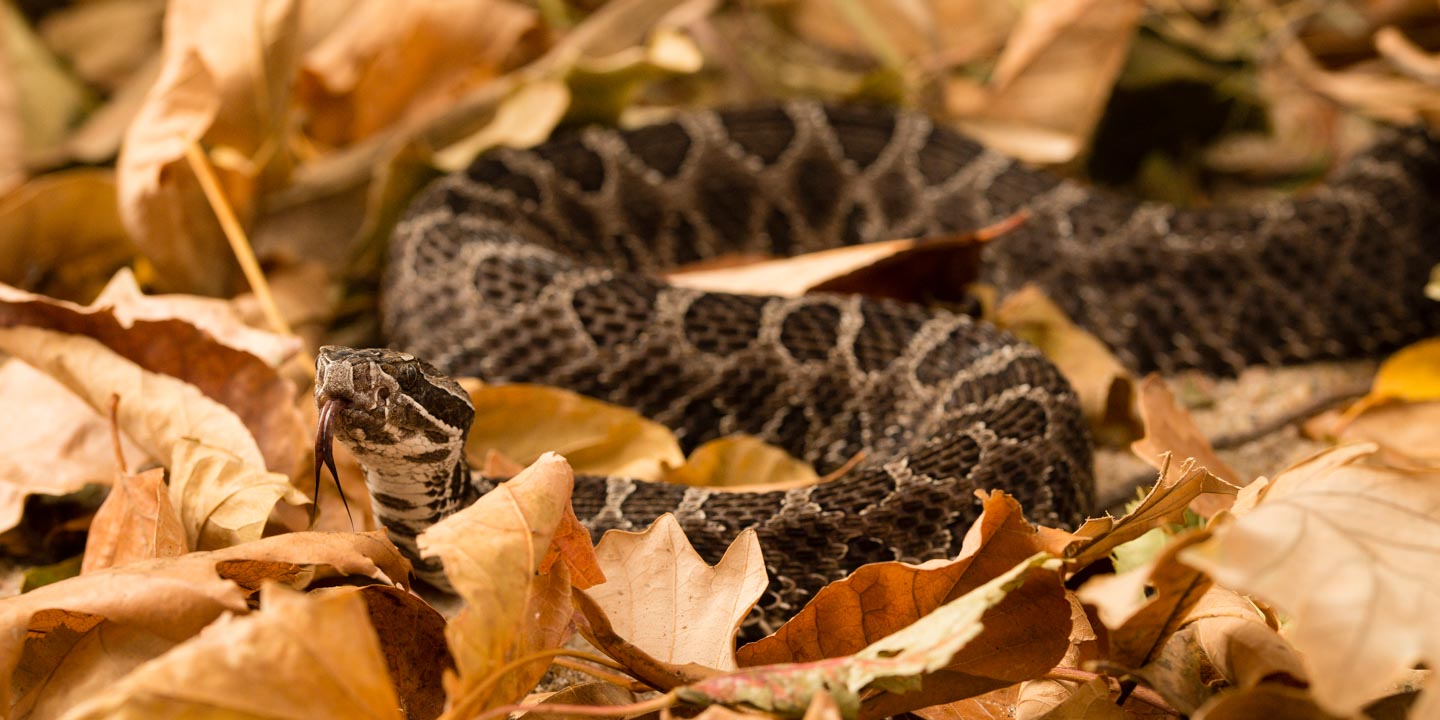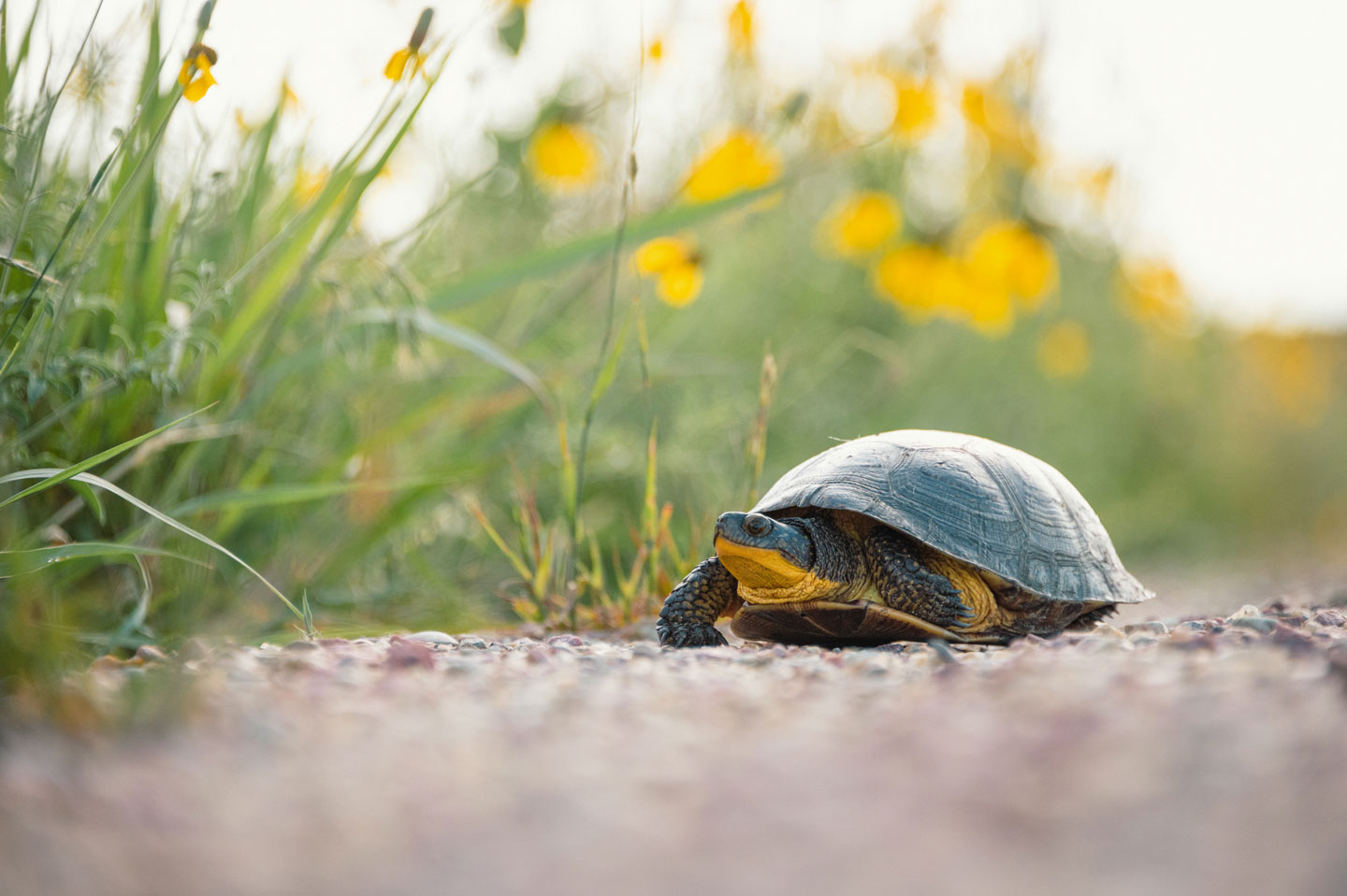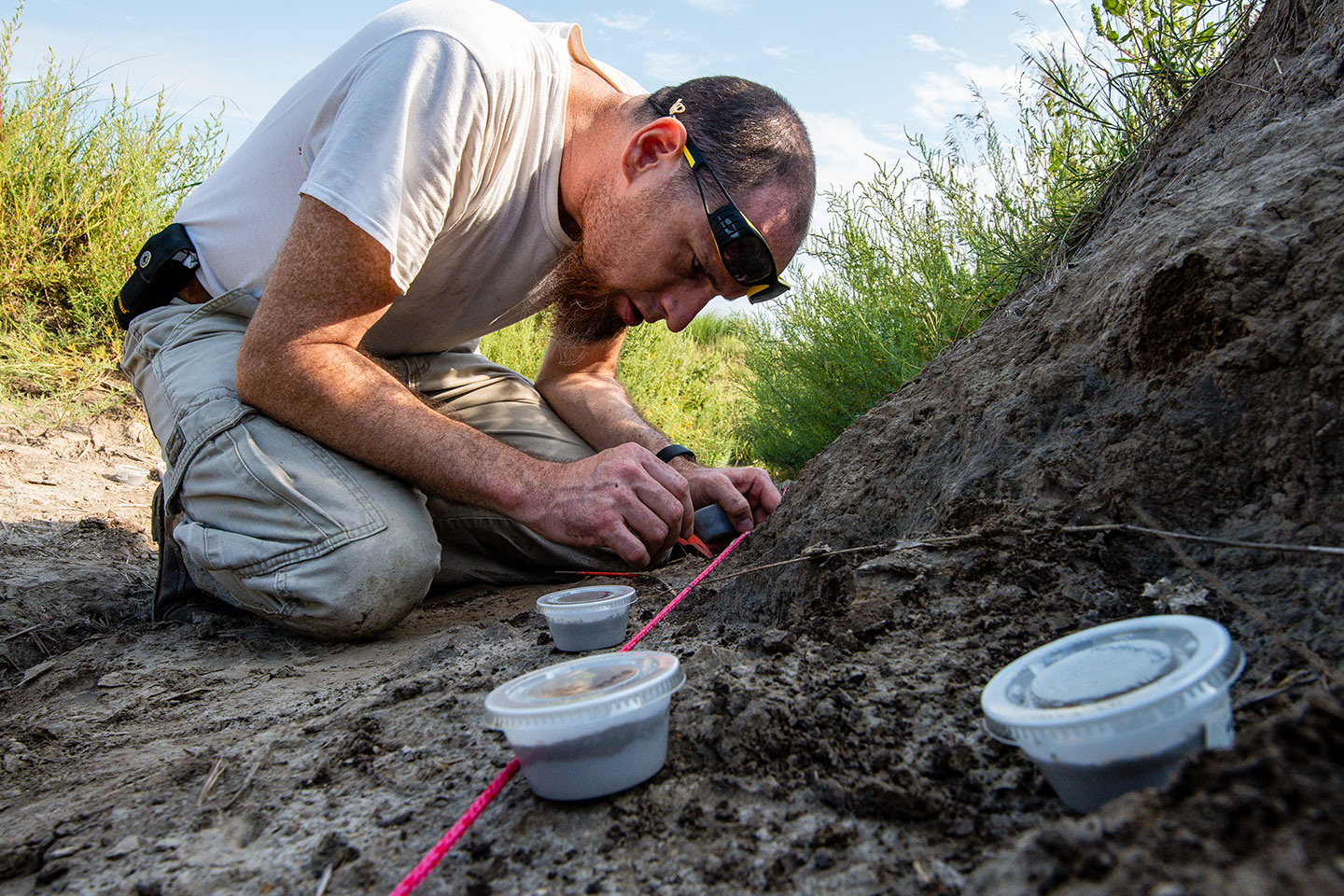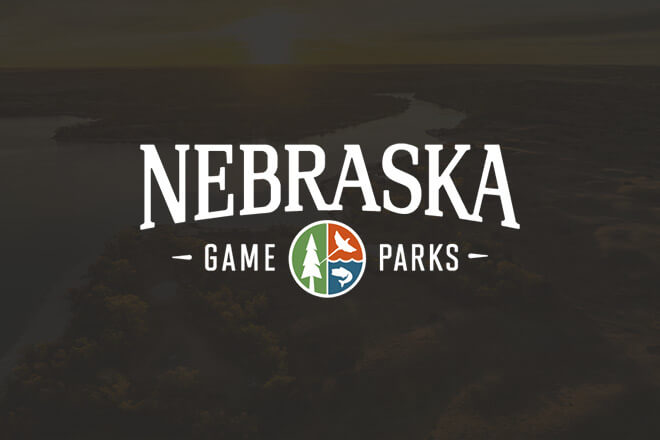Western massasauga
Status: Threatened

The western massasauga (Sistrurus catenatus) is the smallest rattlesnake in Nebraska. It can be 18-39 inches long. It is gray and brown with dark, round brown blotches on the back and other smaller and less-distinct blotches on the sides. It has light and dark bands on the tail. Along the side of the head there are two narrow white lines circling a dark brown band. They have a moderately developed rattle at the end of a stocky tail.
During sunny days, massasaugas can often be found sunning themselves. When approached, they may remain silent and try to retreat, but if disturbed they may bite. They rely on their camouflage to hide rather than striking when first approached. When disturbed, massasaugas sound a warning by rattling their tail. Nonvenomous snakes, such as the bullsnake, may imitate the same behavior by vibrating their tail against vegetation. However, only rattlesnakes have the specialized sound producing rattle on the tip of their tails.
While the venomous bite of a massasauga should be treated by a doctor immediately, there have been no known deaths from their bite. The side effects of a bite are serious because of the cyto-toxin injected, which kills surrounding tissue. Although small, newborn massasaugas are venomous. Massasaugas are normally active during the day. However, to avoid overheating during the summer, massasaugas will change their behavior and become active at dawn and dusk or even at night.
As with other snakes in Nebraska, massasaugas hibernate during the winter months. In Nebraska, massasaugas are exclusively dependent on crayfish burrows for hibernation; sometimes hibernating right next to the crayfish. While individual massasaugas do not hibernate in the same burrow together, they will hibernate near other snakes.
Massasaugas are also known as “Prairie” Rattlesnake, Swamp Rattler, Pygmy Rattler and Buzztail.
Range
Massasaugas are found across eastern North America from New York and Ontario southwest to Texas and New Mexico. In Nebraska, they are found in the southeastern tallgrass prairies, mainly in Jefferson, Gage, Thayer, and Pawnee counties.
Habitat
Massasaugas are found in grassland habitats, such as tallgrass prairie and grassy fields. They favor moist areas, such as marshland, wet prairies and flood plains.
Wet meadows provide habitat for crayfish. During the winter months, massasaugas use these crayfish burrows to hibernate. Without the crayfish burrows, many massasaugas do not survive through the winter.
Diet
Adults mostly eat voles, mice and shrews, while the young mostly eat other snakes and small shrews. Massasauga will also eat lizards and small animals such as birds, snakes, and frogs. They can twitch the tip of their tail to attract prey. With the help of pupils that are vertical and elongated and special sensory pits on the sides of their head, massasaugas are able to see in infrared. Infrared sight, allows them to hunt warm-blooded prey in the dark.
Reproduction
Females become sexually mature when they reach around 50cm in length or about three years old. Males become sexually mature at about 2-3 years, but can occasionally reach maturity at a smaller size. Many females will only breed every two years.
Massasaugas have two breeding seasons, the first in March-April just after they emerge from hibernation, and the second in late summer from July to early August. Females have what is known as delayed fertilization where she stores sperm in the reproductive tract for several months after mating. This allows the young to be born in summer when conditions are more favorable rather than in winter. Regardless of when the female was impregnated, young are born over a year later in July to early September.
Massasaugas give live birth. This is an adaptation to colder climates due to insufficient time for eggs to incubate outside of the body. In Nebraska, females usually produce a litter of 3-13 live young. Once the young are born, adults are not involved with caring for young. The young are born 6½ to 9½ inches long and have a simple button rattle. Rattle segments are added each time the snakes sheds.
Population status
The biggest threat to the species is habitat loss. Habitat loss results from practices such as conversion of grasslands and wet meadows to cropland, draining of marsh habitat and flooding from the construction of ponds and lakes. These actions result in a reduction or elimination in crayfish and their burrows. Some small man-made lakes can provide proper habitat for crayfish, and thus massasauga rattlesnakes, along shorelines and backwaters.
Management and outlook
Massasaugas can directly benefit from conservation of prairie marshes or wet prairies. Proper management of remaining prairies – including prescribed burns and planting native grasses – can be an effect tool. Also, preventing the growth of water-loving trees such as Cottonwoods and Willows will allow for water to remain in marshes and provide proper habitat for crayfish.
Conservation help
Landowners can help conserve massasaugas by managing their prairies for crayfish habitat. Landowners, along with individuals, can report illegal harassment of all snake species to the Nebraska Game and Parks Commission. Individuals also can make donations to conservation organizations dedicated to preserving or restoring massasauga habitat and educating the public.
References
Nebraska’s At-risk Wildlife. Nebraska Game and Parks Commission. 2010.
A Field Guide to the Amphibians and Reptiles of Nebraska. 2010. Fogell, Daniel D.
Wisconsin Department of Natural Resources: Massasauga Rattlesnake. 2011. www.dnr.state.wi.us
NOTE: New data of the occurrence and distribution of this species are being collected constantly and some of the information in the pamphlet may be outdated. The information in this pamphlet should be used for a general understanding of the species and not as the sole source of range location for any report, project, regional or local planning, or for environmental impact assessments. For current information on this species, please contact the Nebraska Game and Parks Commission, Wildlife Division.




